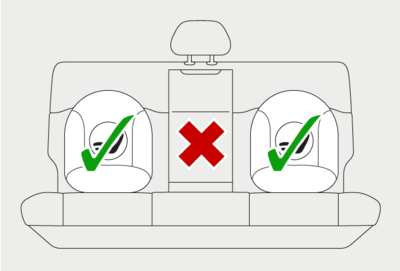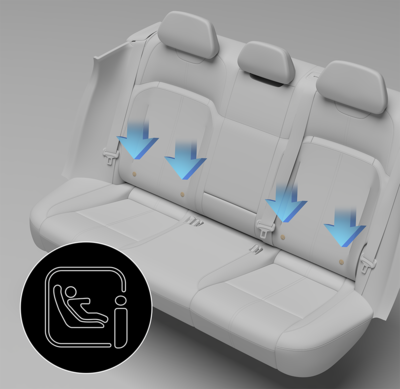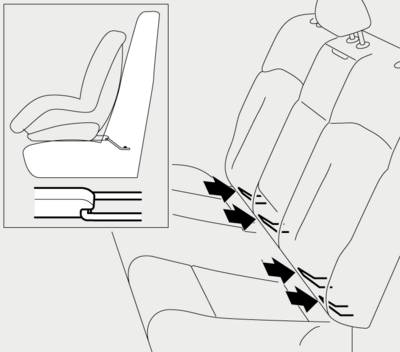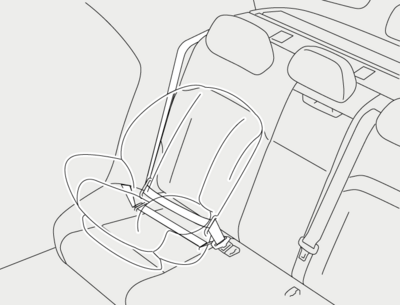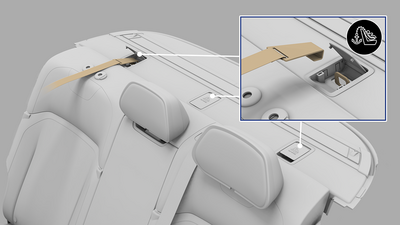Guidelines for Seating Children
All child restraint systems are designed to be secured by lap belts or the lap belt portion of the lap-shoulder belt.
Lucid designed and fitted your vehicle's seat belts for adults and larger children. For the safety of infants and children under 12, it is important to restrain them in a suitable child safety seat appropriate for their age and size. Fit a child seat that has been approved for use in your vehicle. Follow the manufacturer's fitting instructions, exactly. You can contact Lucid for a list of approved child seats. See Contacting Lucid Motors. The rear seat supports both iSize and ISOFIX child seats.
Lucid strongly advises that you DO NOT use a rear-facing child seat on the front passenger seat.
